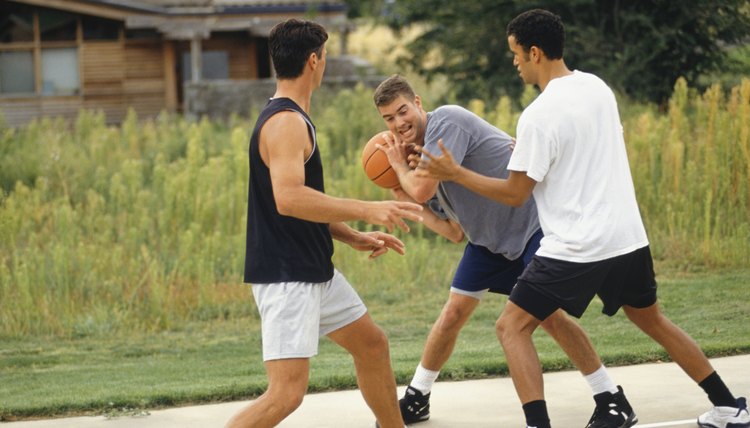What does fact checked mean?
At SportsRec, we strive to deliver objective content that is accurate and up-to-date. Our team periodically reviews articles in order to ensure content quality. The sources cited below consist of evidence from peer-reviewed journals, prominent medical organizations, academic associations, and government data.
The information contained on this site is for informational purposes only, and should not be used as a substitute for the advice of a professional health care provider. Please check with the appropriate physician regarding health questions and concerns. Although we strive to deliver accurate and up-to-date information, no guarantee to that effect is made.
How to Avoid Cramps While Playing Basketball

Basketball requires a high degree of muscular and cardiovascular endurance. Running up the court, propelling passes and jumping for a shot all require the use of your entire body. Cramps are the bane of any athlete, but are especially detrimental during a high-movement game such as basketball. Whether you experience a cramp in your side or a pinching in your leg, learning to avoid cramps altogether means you're able to play in top form.
Consume a sports drink that contains both sodium and potassium before you begin playing basketball. When you play sports, especially one as high-paced as basketball, you sweat. While the water you lose through sweat is easily replaced through water, you also need to replace the sodium and potassium lost through sweat, especially when playing longer than 90 minutes. Start with a sports drink to build up your stores of both.
Eat a small snack high in complex carbohydrates to energize your body before workouts. Cramps could be the result of overexertion, so building up your energy beforehand helps stave off muscle and body fatigue as you play. Whole wheat crackers and cheese, a piece of fruit or whole wheat bread and peanut butter all help fuel your body and prevent cramps.
Participate in a pre-game warm-up before you begin playing. Warming up muscles helps prevent injury and cramps from ligament sprain and strain. A warm-up should include both five minutes of light cardiovascular activity and the static stretching of each major muscle group. Johnny Doyle, coach for the Los Angeles Clippers, advises to stretch your back, hips, hamstrings, groin, quads (along with calves, ankles, feet), shoulders and neck in that order. If you're especially prone to leg cramps, pay special attention to your leg muscles as you stretch.
Drink enough water to properly hydrate your body during the game. Cramps are often the result of dehydration on the court. In general, you should consume at least 7 to 10 ounces of water for every 10 to 20 minutes of active game play. Otherwise, drink to your thirst so you don't cramp as a result of overhydration.
Slow your pace or ask for a sub when you feel a cramp coming on. Cramps are easier to prevent than they are to treat, so when you feel the tell-tale pinching or pulling of a certain muscle, signal for a timeout and take a short break as long as your coach authorizes. Massage the cramping muscle and get a drink before you head back onto the court.
References
Writer Bio
Kay Ireland specializes in health, fitness and lifestyle topics. She is a support worker in the neonatal intensive care and antepartum units of her local hospital and recently became a certified group fitness instructor.
